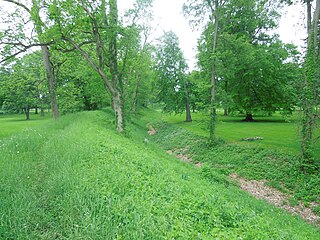| Part of a series on the |
| Book of Mormon |
|---|
 |
The Heartland Model (or "Heartland Theory") of Book of Mormon geography postulates that the events described in the Book of Mormon took place, primarily, in the heartland of North America. [1]

The geographical setting of the Book of Mormon is the set of locations of the events described in the Book of Mormon. There is no universal consensus among Mormon scholars regarding the placement of these locations in the known world, other than somewhere in the Americas. A popular "traditional" view among many Latter-day Saint faithful covers much of North and South America; while many Book of Mormon scholars, particularly in recent decades, believe the text itself favors a limited Mesoamerican or other limited setting for most of the Book of Mormon events.

The Book of Mormon is a sacred text of the Latter Day Saint movement, which adherents believe contains writings of ancient prophets who lived on the American continent from approximately 2200 BC to AD 421. It was first published in March 1830 by Joseph Smith as The Book of Mormon: An Account Written by the Hand of Mormon upon Plates Taken from the Plates of Nephi.
The Eastern Woodlands is a cultural area of the indigenous people of North America. The Eastern Woodlands extended roughly from the Atlantic Ocean to the eastern Great Plains, and from the Great Lakes region to the Gulf of Mexico, which is now the eastern United States and Canada. The Plains Indians culture area is to the west; the Subarctic area to the north. The Indigenous people of the Eastern Woodlands belong to two different language groups, the Iroquoian-speaking people and the Algonquian-speaking people.
Contents
Among its proposals are that Mound Builders, including the Hopewell and the Adena, were among those peoples described in accounts of events in Book of Mormon books such as Alma and Helaman. The Mississippi River is identified as the River Sidon, and Big Spring (in Carter County, Missouri) as the Waters of Mormon. The Niagara Falls region has been described as the "narrow neck of land" mentioned in Alma. In addition, the Appalachian region of Tennessee is claimed by some to be the Land of Nephi. [2]

The various cultures collectively termed "Mound Builders" were inhabitants of North America who, during a circa 5,000-year period, constructed various styles of earthen mounds for religious, ceremonial, burial, and elite residential purposes. These included the pre-Columbian cultures of the Archaic period, Woodland period, and Mississippian period; dating from roughly 3500 BCE to the 16th century CE, and living in regions of the Great Lakes, the Ohio River Valley, and the Mississippi River valley and its tributary waters.

The Hopewell tradition describes the common aspects of the Native American culture that flourished along rivers in the northeastern and midwestern United States from 100 BCE to 500 CE, in the Middle Woodland period. The Hopewell tradition was not a single culture or society, but a widely dispersed set of related populations. They were connected by a common network of trade routes, known as the Hopewell exchange system.

The Adena culture was a Pre-Columbian Native American culture that existed from 1000 to 200 BC, in a time known as the Early Woodland period. The Adena culture refers to what were probably a number of related Native American societies sharing a burial complex and ceremonial system. The Adena lived in an area including parts of present-day Ohio, Indiana, Wisconsin, West Virginia, Kentucky, New York, Pennsylvania, and Maryland.
In this model, the Hill Cumorah is located in upstate New York. It is the same hill referenced in the Book of Mormon as the location of the destruction of both the Jaredite (Adena) and Nephite (Hopewell) peoples, and the same hill in which the prophet Mormon hides the sacred records, and from which his resurrected son, Moroni, delivers the records to the Prophet Joseph Smith in 1827.

Cumorah is a drumlin in Manchester, New York, United States, where Joseph Smith said he found a set of golden plates which he translated into English and published as the Book of Mormon.

Palmyra is a town in southwest Wayne County, New York, United States. The population was 7,975 at the 2010 census. The town is named after the ancient city Palmyra in Syria.

The Jaredites as one of four peoples that the Latter-day Saints believe settled in ancient America.
In recent years, this theory, which challenges the traditional paradigm of Central America as a primary location for Book of Mormon geography, has become a "movement" [3] [4] among some Latter Day Saints. Proponents see this new model as a way of better supporting the historical authenticity of the Book of Mormon.

A limited geography model for the Book of Mormon is one of several theories by Latter Day Saint movement scholars that the book's narrative was a historical record of people in a limited geographical region, rather than of the entire Western Hemisphere as believed by some early Latter Day Saints.



